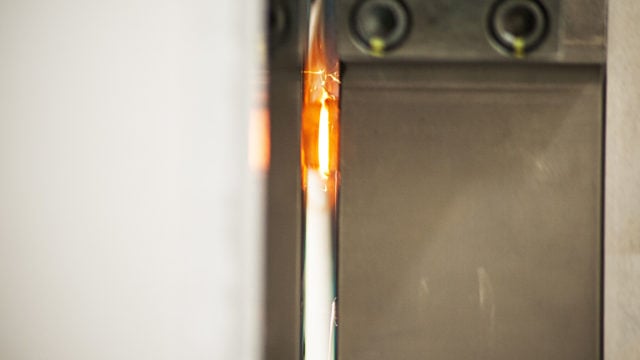
Thompson Friction Welding : Subcontract Linear Friction Welding
What is Linear Friction Welding? Linear friction welding is a solid-state joining process. The technique involves…
What is Linear Friction Welding?
Linear friction welding is a solid-state joining process. The technique involves two parts being brought into contact, one oscillating at a low frequency. This creates friction that generates heat until the materials achieve a plasticized state. The oscillation stops and a final forge load is applied which creates a forged parent material molecular bond across the entire mating interface.
Linear friction welding delivers a number of advantages: It is a repeatable, machine controlled, quick process, taking as little as a second for a full-face bond to occur. Little preparation of the raw materials is required*. Surface imperfections and impurities are expelled as weld flash. No consumables are required; no harmful fumes are produced, potential issues seen in traditional welding methods associated with solidification and changes to grain structure, segregation or porosity are not features of this solid-state bonding process.
Linear Friction Welding
The process is generally divided into four phases:
1. Contact – The two parts are put in contact.
2. Conditioning – Pressure is applied, and oscillation motion starts.
3. Burn-off – Pressure and motion are still applied, and the material is expelled.
4. Forge – Oscillations are stopped, and pressure is held during cool down.
Linear Friction Welding Process Advantages
• 100% parent material joints
• Full bonding across the entire contact area
• Solid state process retaining parent material properties
• Fine grain structure: no porosity and minimal hardening
• Superior joint strength
• Very low risk for safety critical joints
• The only direct method of joining for cu-al and other bi-metallics
• Machine stored parameters offer 100% repeatability & reliability
• Automated joining process with 100% in-process monitoring
• Comprehensive quality assurance
• Fast weld times
• Economical per unit cost
• Flexibility to weld wide range of similar & dissimilar materials
Subcontract Linear Friction Welding : The Possibilities
Near net shape and bi-metallics can bring huge cost savings. Near net shape manufacturing is a term given to processes in which the initial fabrication of a part is close in size and shape to the finished article. This approach reduces pro-duction costs, production time and most importantly expensive material waste.
Near net shape manufacturing techniques are sometimes linked to lean manufacturing methods, as the primary objective is to reduce waste involved when producing the final product. Industries who utilise NNS include: Automotive, Aerospace, Rail & Power Generation. It is particularly useful for applications which require the use of expensive and exotic raw material combinations.
Please contact us to discuss:
• R&D Projects
• Small and Large Production Runs
• Procurement and stocking options
• Testing and laboratory services in -house or via a KUKA partner
• Pre and post weld preparations in-house or via a KUKA partner
• Metallurgical analysis/investigation work
T: 0121 585 0888
E: Frictionwelding.UK@kuka.com
Be first to see all the updates from MTDCNC
Our newsletters frequency varies dependant on content
All the latest deals from the industry feature on our newsletters